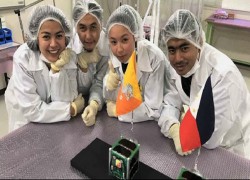NEW DELHI, Dec 28: Four Bhutanese space engineers began their first phase of two month training at the Indian Space Research Organisation’s U R Rao Satellite Centre in Bengaluru on Tuesday for the launch of Bhutan’s satellite with the help of India next year.
The four space engineers from the department of Bhutanese information technology had arrived in India on Monday. The training was in keeping with India’s efforts to build space infrastructure for Bhutan under its “neighbourhood first” policy. The Prime Minister Narendra Modi had announced during a virtual meeting with his Bhutanese counterpart Lotay Tshering on November 20 that India would launch the small satellite next year. Bhutan’s first nano-satellite Bhutan-1, built with Japan’s assistance, was launched on a SpaceX rocket in 2018.
The space engineers from Bhutan’s department of information technology and telecom will undergo the first phase of training at ISRO’s UR Rao Satellite Centre in Bengaluru from December 28 to February 25. This training will cover theoretical and technical aspects and include visits to laboratories and test facilities, officials said.
The Bhutanese team will also work with ISRO to draw up the second phase of training, which will include activities aimed at developing INS-2B satellite for Bhutan.
The launch of the satellite is part of India’s efforts to back Bhutan King Jigme Khesar Namgyel Wangchuck’s plans to use advanced technology, including ICT and space technology, for developing his country. India has been closely working with Bhutan in space technology. In August 2019, Modi and Tshering jointly inaugurated a ground earth station for the South Asia Satellite (SAS) in Thimphu, which was built with ISRO’s support. SAS was launched by India in 2017 for countries in South Asia, and currently provides frees services for television broadcasts and VSATs to members of the South Asian Association for Regional Cooperation (Saarc).
In view of the impact that SAS has on Bhutan’s socio-economic development, especially in areas such as communications and disaster management, the Indian side had offered increased bandwidth on an additional transponder in line with Thimphu’s requirements.
(Manas Dasgupta)

